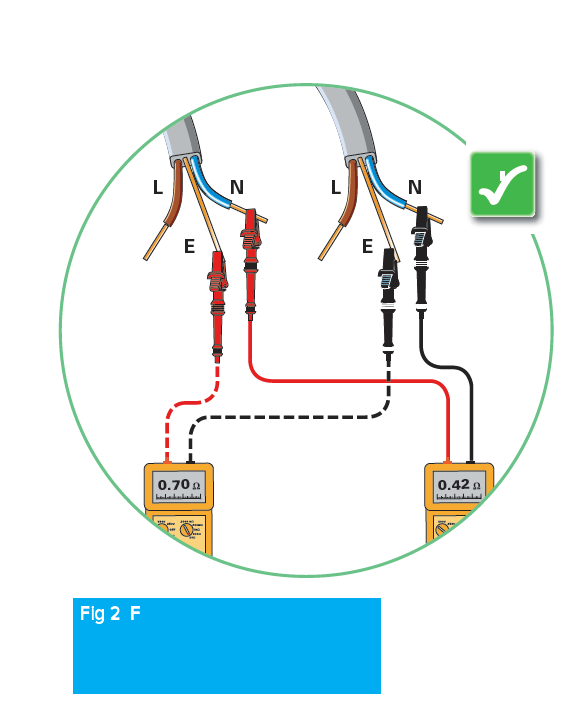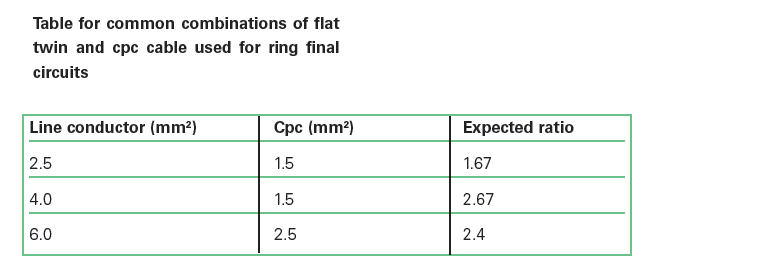Some tips on calculating the end-to-end resistances of the circuit protective conductors (cpc) and live conductors.

The ratio of the end-to-end resistances of the circuit protective conductors (cpc) and live conductors for flat twin and earth cable is not always 1.67.
When measuring the end-to-end resistances of ring final circuit conductors wired in flat twin and earth cable, it is important to recognise that if the conductors are not of the same length or have a crosssectional area (csa) other than 2.5 mm2 for the line and neutral conductors and 1.5 mm2 cpc the resistance ratio will not be 1.67.
Solution
For every ring final circuit a test is required to verify the continuity of each conductor, including the cpc (Regulation 612.2.2 refers). Domestic ring final circuits are, more often than not, wired using flat twin and earth cable having 2.5 mm2 line and neutral conductors and 1.5 mm2 cpc. Where this is the case, the expected end-to-end resistance values measured for each loop of conductor should result in the cpc having a resistance approximately 1.67 times that of the line or neutral loop. This is due to the ratio of their csas (that is, 2.5 / 1.5 = 1.67).

However, a ring final circuit may need to be wired using flat twin and earth cable with larger conductor sizes. This may be due, for example, to designing for voltage drop considerations or because the cable will be covered with thermal insulation. Where the live conductor size is larger than 2.5 mm2, the ratio of the resistance of the cpc to that of the line or neutral conductor will not be 1.67. For example, where the flat twin and earth cable has 4.0 mm2 line and neutral conductors and 1.5 mm2 cpc, the ratio should be approximately 2.67 (given by 4.0 / 1.5 = 2.67). The same approach would apply also for other sizes of flat twin and reduced cpc cable.
Where, exceptionally, a ring final circuit is wired using some other type of cable (such as armoured cable or mineral insulated cable), this may result in the cpc having a copper equivalent csa greater than the line and neutral conductors. Under such conditions the expected end-to-end resistance values measured for each loop of the line and neutral conductors, would have a value higher than the cpc.
Regulation 612.2.2
A test shall be made to verify the continuity of each conductor, including the protective conductor, of every ring final circuit.

- For other guidance and publications please see the ELECSA website.
- For information about the ELECSA schemes, visit www.elecsa.co.uk or call 0333 321 8220
